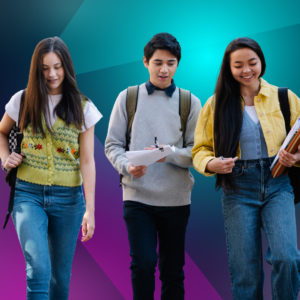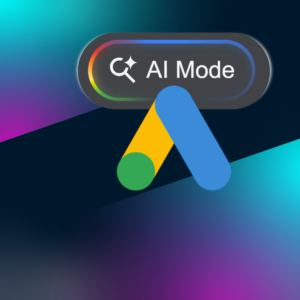The past three weeks we’ve been on a mission to find out if AI can be a dependent tool in the marketing world and whether or not it’s really worth utilising.
To do this, we set out with a series of challenges for our in-house creative team and online AI robots. We briefed them on creating logos, writing engaging taglines and illustration. We then showcased the designs to our followers on Linkedin, letting them decide what they thought to be the human approach.
So, is AI worth using in your content strategy? We hope you are ready as the results are in…
Logo Design
Our first challenge for our followers was to recognise which of four logos was created by our Head of Creative at Arke, hidden in a mix of designs generated by AI.
We can now confirm that 55% of our audience voted for the logo made by our Head of Creative with the love reaction, so a close split in opinions.
With sites like Canva and Design.ai offering image generated content through artificial intelligence, the rise of AI content is at an all time high. Now whilst it does speed up the design, it can sometimes take the concept a bit too literally, producing content that may lack creativity.
However, sometimes that could be a great thing for marketers. For example, Google has recently released Product Studio, a system that allows shop owners to easily create unique and tailored product imagery for free.
With products on Google earning a 76% increase in impressions and a 32% increase in clicks when having more than one image, this tool could really help those with small budgets hoping to boost their product image catalogue.
And whilst that is still a pretty cool feature, we know AI can’t always provide the creativity, critical thinking, and problem-solving skills that designers bring to their work. Take for example how we generated a 1009% ROAS for Shay and Blue through pairing custom messaging frameworks with tailored creatives and paid media activity, generating record-breaking revenue during Black Friday.
Copywriting
Next up was our Copy and Content Executive Jacob, alongside AI for the most engaging tagline for Arke.
AI seems to be a well established thinker here, convincing 50% of our audience that it was our in-house Copywriter.
Scheduling platforms have recently launched generative AI to their users. HubSpot’s AI content assistant utilises OpenAI’s GPT model to help anyone on your team ideate, create, and share content in a flash.
Again it’s about being that extra support in the marketing process. Tools like this can help the everyday marketer create content plans, reactive posts and generate ideas for blogs – which lets admit, can be very helpful when you’re on tight deadlines.
However, Sitecare did a similar experiment to us and found that AI underperformed humans in all areas of copywriting. Human-generated content had a lower bounce rate than AI, with Google ranking it higher as readers stayed on the page longer. This is because humans understand the behavioural, unspoken nuances that a machine would have to be told…and if you’re spending so much time briefing this into ChatGPT, its going to be taking you far more time than its worth.
AI can find information on the internet and construct a blog on all it finds, but it tends to lack the creativity and research that goes into making writing that extra bit special – so if you’re writing about a very in depth topic, we recommend sticking to pen and paper for now.
But don’t get us wrong, AI is a very handful tool for all ideation and content planning needs.
Illustration
Lastly, Matt took to the sketchbook to create an illustration which we paired against three AI generated images.
Tasked with finding the illustration representing ‘people using the internet’ that was created by our talented Head of Creative, 71% of our followers got it right and chose the support reaction image.
Now AI may not have you fooled this time, but it is doing some pretty cool things in the Adobe world. With users creating about 200 million AI-generated images using Adobe’s in-house text-to-image model Firefly since it launched in March, the platform is now planning to launch to 12,000 enterprise customers.
With AI now having the ability to action repetitive and mundane tasks, designers can now focus more on creative and strategic aspects of their work. Tasks such as generating design variations, resizing images, or formatting layouts can be accelerated and streamlined using AI algorithms. This efficiency enables designers to work faster and allocate more time to the creative process.
In conclusion, AI is a pretty handy support tool, and offers a realm of opportunities for content creators and designers alike. With the aspect of saving time, helping with ideation and new platforms like Firefly introducing a range of generative tools with endless possibilities, it’s definitely a feature worth utilising. But if you’re looking for something powered with behavioural science, research and audience analysis, it’s a human team of experts you should look to.
Blog written by ChapGPT (only joking).





